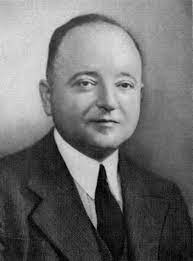Wirth, Louis

Bio: (1897-1952) American sociologist. Louis Wirth was born in Germany, into a family of Jewish origin, and in 1911 he emigrated to the United States. Wirth taught at the University of Chicago, where he became part of the Chicago School of Sociology. He mostly dealt with the sociology of the city, and he paid special attention to issues of urbanism, immigrant communities, mass media, and group psychology that was developing in cities.
The first book for which he became famous, Ghetto (1928), studies the life of Jewish immigrants who lived in two city districts of Chicago. Wirth called one city district a "ghetto", comparing it to the real ghetto in which Jews lived in medieval Frankfurt. He believed that the experience of living in medieval ghettos, in which Jews were forced to live in isolation, imprinted the "ghetto experience" on the Jewish mind, which in the United States also, now voluntarily, began to live in isolated neighborhoods. Wirth believed that, with the increase in the assimilation of immigrants, their residential mobility also increased. Wirth continued to study minorities and is known for his definition of a minority: “A group of people who because of their physical or cultural characteristics, are singled out from the others in the society in which they live for differential and unequal treatment, and who therefore regard themselves as objects of collective discrimination” (Wirth, 1945).
Wirth's greatest contribution to the sociology of the city is his article "Urbanism as a Way of Life" (1938). In that article, he expounds on his theory of urbanism. Wirth partially deviates from the classical ecological approach to the sociology of the city of Park and Burgess and introduces a synthetic approach, combining the ecological approach with Simmel's sociological approach. Wirth, at first, wants to introduce a sociological definition of the city. He recognizes that cities are often the centers of the economic, political, intellectual, and cultural life of a society. However, he believes that the sociological definition of the city must start from the specific characteristics of the city, and that is a special way of human association that takes place in the city. He calls this specific way of human association in the city urbanism, while under urbanization he denotes the process during which urbanism spreads to other settlements and areas. The sociological definition of a city should include a way to study the variations that exist between different cities. Variations in the size, density, and function of cities are great, and it is especially harmful to equate urbanism with the development of capitalism and industrialization. Thus Wirth comes to the definition of the city: "For sociological purposes a city may be defined as a relatively large, dense, and permanent settlement of socially heterogeneous individuals" (Wirth, 1938).
For Wirth's definition of the city, the most important is the great and specific heterogeneity of the individuals who live in it, and in that sense, he notes that the city has always been a place where different cultures and races merge. With the increase in the population and the population density of the city, there are increasing individual variations in the inhabitants. At the same time, the importance of family and neighborly ties is diminishing, while competition and formal control mechanisms are becoming more important than solidarity relations. Human relations, in a big city, are primarily secondary, and interdependence is limited to fragmentary activities. This leads to the fact that the relations of the people in the city are, above all, utilitarian, impersonal and transient, restrained and indifferent. Individuals in the city have a greater degree of individual freedom, but they lose the sense of common moral connection, so they can easily enter a state of anomie.
There is a growing division of labor and specialization in cities, while economic relations are becoming exclusively monetary. The patterns of consumption of goods, services, and cultural content of the inhabitants of the city are very different in relation to the inhabitants of the village. Although the income of urban residents is, on average, higher than the income of rural residents, their costs are higher, and housing and communal costs are especially high. Big cities also tend to be spatially separated because people of homogeneous status tend to live in the same parts of the city. A special type of spatial segregation is one on ethnic and racial grounds. Spatial segregation, great social differences, competitive spirit, segmental personal relationships, the fast pace of life, and high population density contribute to the creation of nervous tension and frustration among the city's residents. This leads to an increase in social pathology in cities - crime, delinquency, divorce, etc. That is why it is very important to introduce official mechanisms of social control in the city. Educational institutions, cultural institutions, mass media, civil and voluntary organizations, and political propaganda contribute to equalizing individual differences between the inhabitants of the city.
In the article "Human Ecology" (1945), Wirth states that human ecology should be viewed as an adjunct, not a substitute, to other sociological approaches because the "cultural order" crucially influences the modification of the "ecological order".
Main works
The Ghetto (1928);
Our Cities: Their Role in the National Economy (1937);
„Urbanism as a Way of Life”, in American Journal of Sociology (1938);
„The Problem of Minority Groups”, in (Linton R. ed.) The Science of Man in the World Crisis (1945);
„Human Ecology”, in American Journal of Sociology (1945);
„Consensus and Mass Communication”, in American Sociological Review (1948); Community Life and Social Policy (1956);
On Cities and Social Life (1964).

